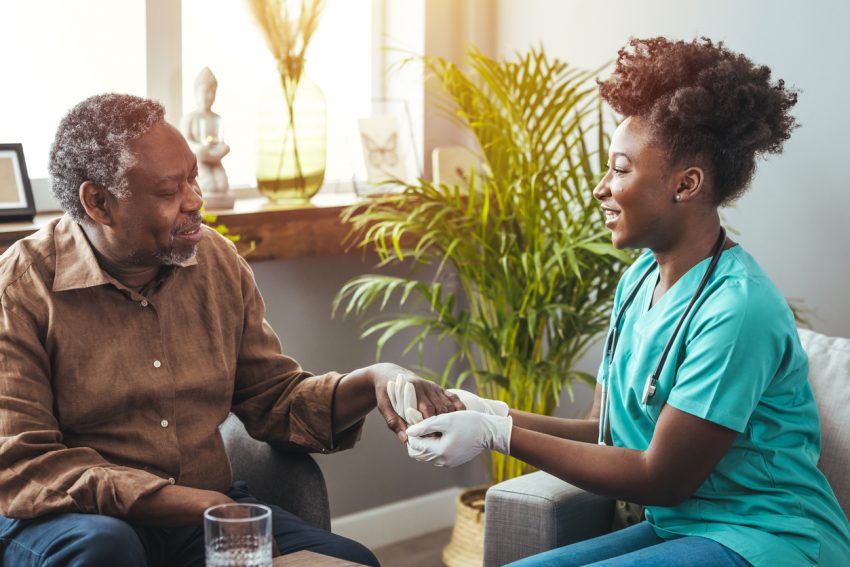All About Home-Based Palliative Care and How It Can Help You

Are you or a loved one living with a serious illness like cancer, stroke, dementia, or heart or lung disease? If so, you may find that you need help managing symptoms, reducing stress, and improving your quality of life. Palliative care can help.
You or your loved one can receive palliative care at a doctor’s office (“outpatient clinic”), the hospital, or home (“home-based palliative care”). Having these options allows you to get the care that you need, in a setting that makes the most sense for you. Questions come up a lot about one of the options—home-based palliative care. This blog post will help answer any questions that you may have.
First, what is Palliative Care?
Palliative care (pronounced pal-lee-uh-tiv) is specialized medical care for people living with a serious illness. This type of care is focused on providing relief from the symptoms and stress of the illness. The goal is to improve quality of life for both the patient and the family. Palliative care is provided by a specially trained team of doctors, nurses and other specialists, who work together with a patient’s other doctors to provide an extra layer of support. It is appropriate at any age and at any stage in a serious illness, and it can be provided along with curative treatment.
As mentioned earlier, palliative care is available in various settings (e.g., at home, clinic, hospital), so that the person living with a serious illness can receive it where they need it most. Whether that’s at home or in a hospital, the goals stay the same. On top of this, home-based palliative care can help avoid unnecessary hospitalizations by managing complex symptoms at home (like constipation), before they get worse.
What is home-based palliative care? What should I expect?
Just like at the hospital or doctor’s office, home-based palliative care teams are dedicated to helping improve quality of life, and would work closely with you, your family, and your other doctors. The palliative care team would treat symptoms like pain, anxiety, and shortness of breath—keeping you at home, instead of the emergency department. They would spend time getting to know you and your loved ones, providing care based on your needs. This may include stress, spiritual needs, or even coordinating necessary medical tests to be done at your home, including x-rays or blood work. On top of this, the palliative care team would regularly communicate with your other doctors to make sure everyone is on the same page.
Will the home-based palliative care team listen?
Absolutely. The palliative care team will spend time listening to you, getting to know you and your loved ones, and learning what’s important to you. Together, you will come up with a treatment plan that works for you.
Is home-based palliative care available where I live?
If you or a loved one are living with a serious illness, it’s important to talk to your doctor about palliative care to learn what services are available where you live. To find a palliative care program in your area, the Palliative Care Provider Directory can help. You can also share it with your doctor, and you can look at it together.
How to Get Palliative Care
If you or a loved one are living with a serious illness, ask your doctor for a palliative care referral. Based on where you live, home-based palliative care may be available—but, when it’s not, it is available in most hospitals and outpatient clinics. For more information about palliative care and to see if it’s right for you, visit GetPalliativeCare.org.
About GetPalliativeCare.Org
GetPalliativeCare.Org is an online resource for patients and families that focuses solely on providing information on palliative care from the point of diagnosis. The site is provided by the Center to Advance Palliative Care.
